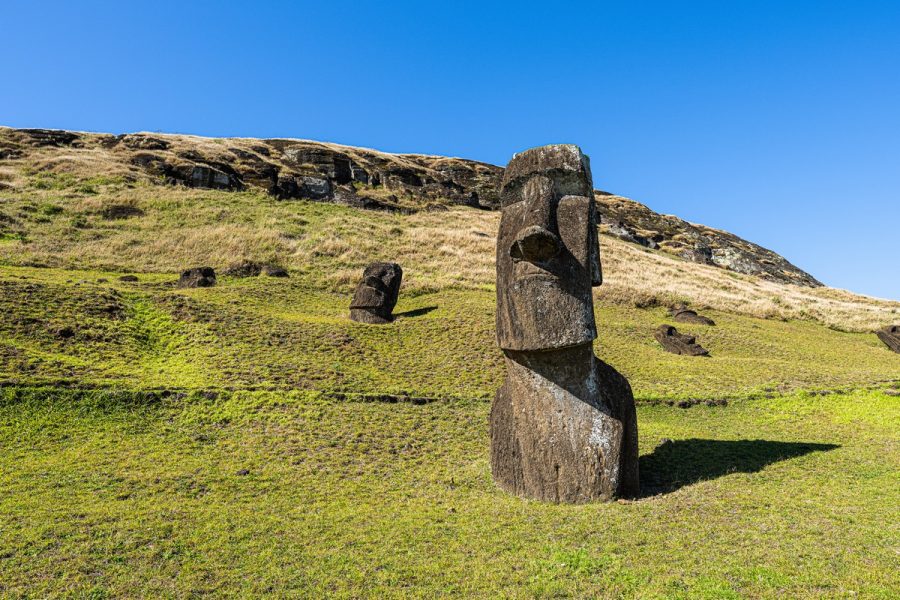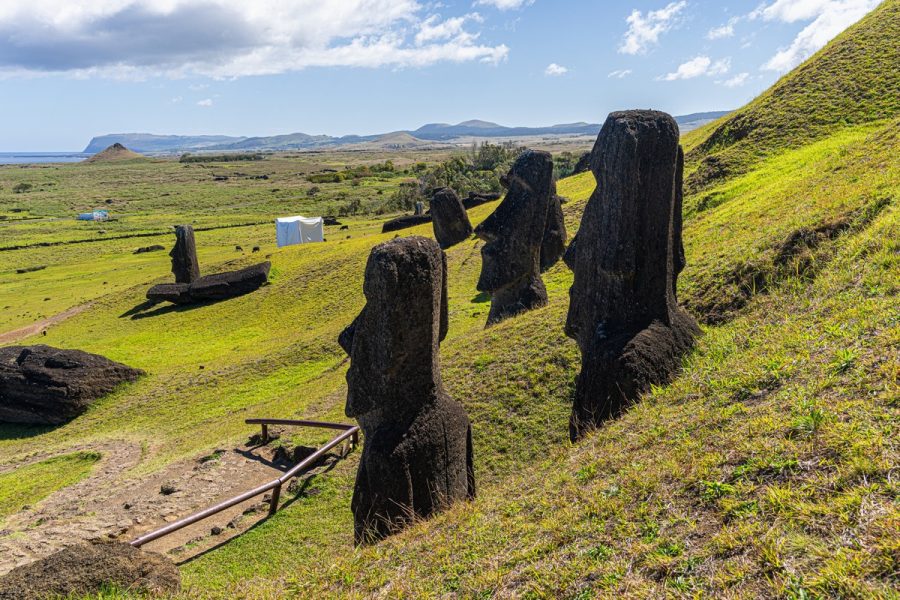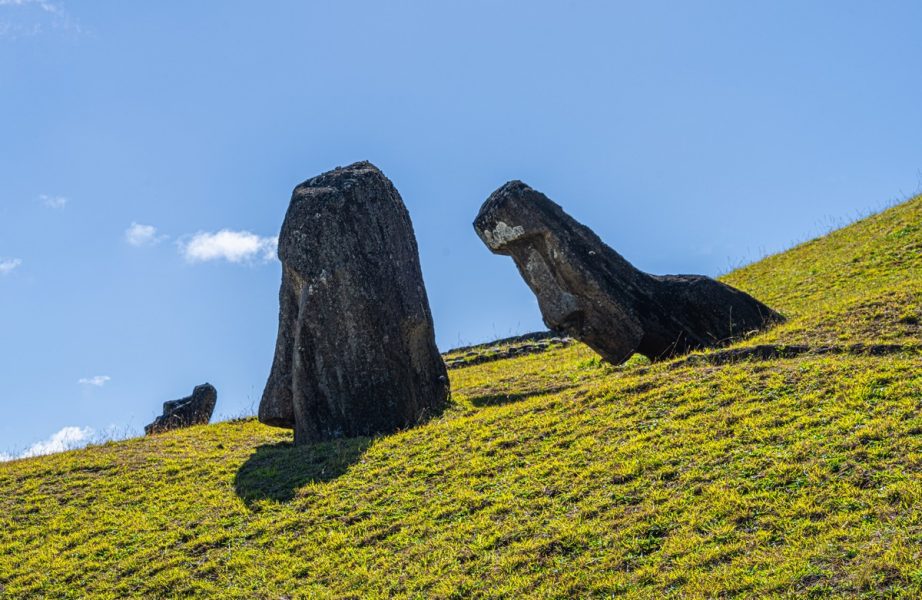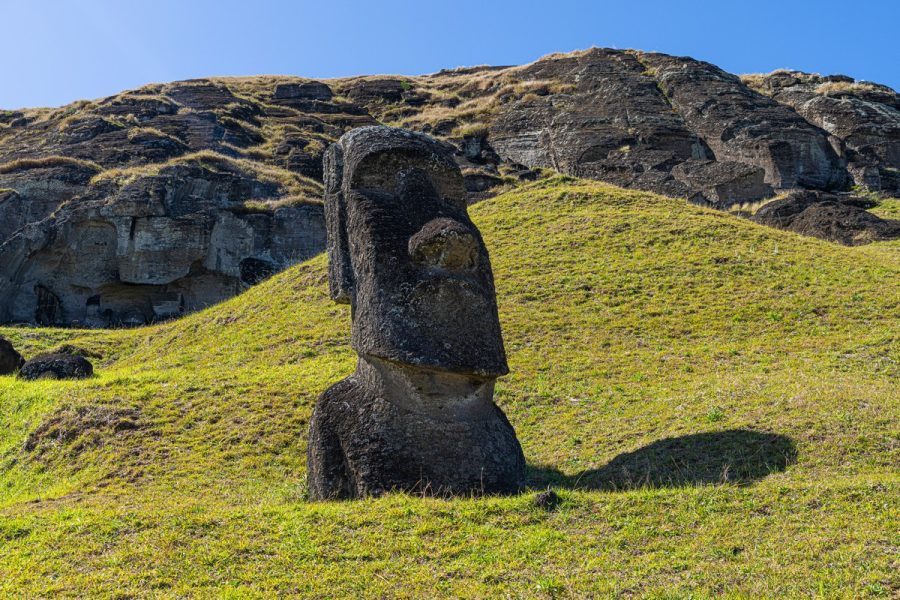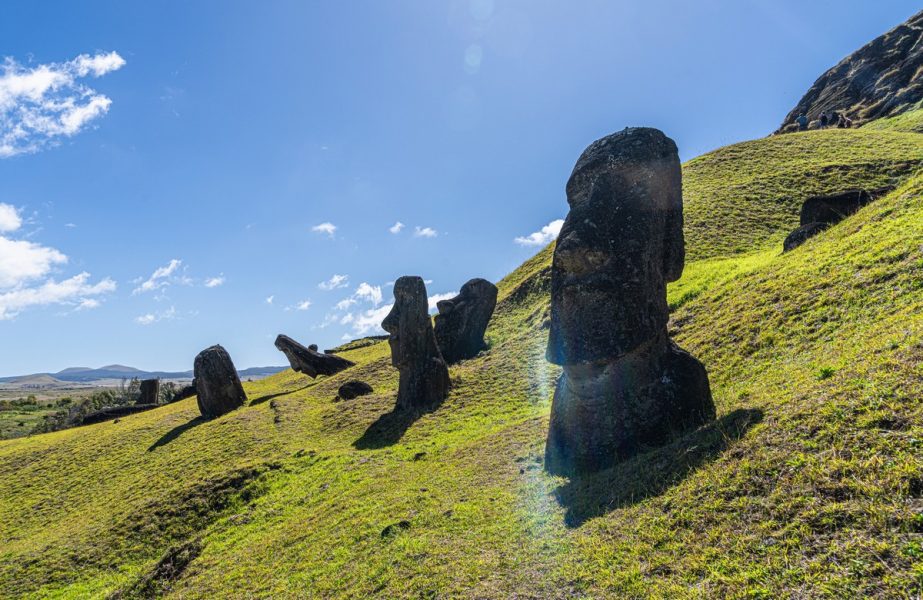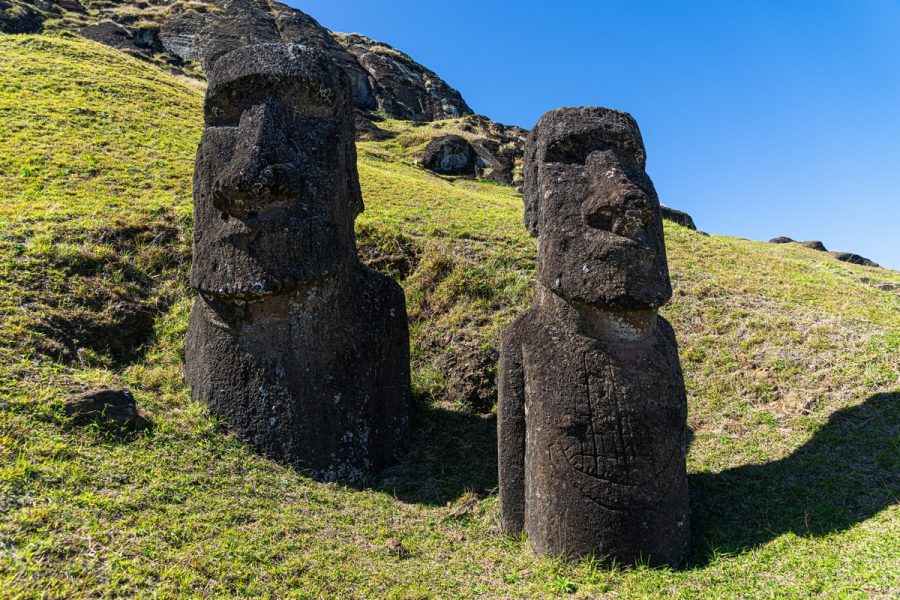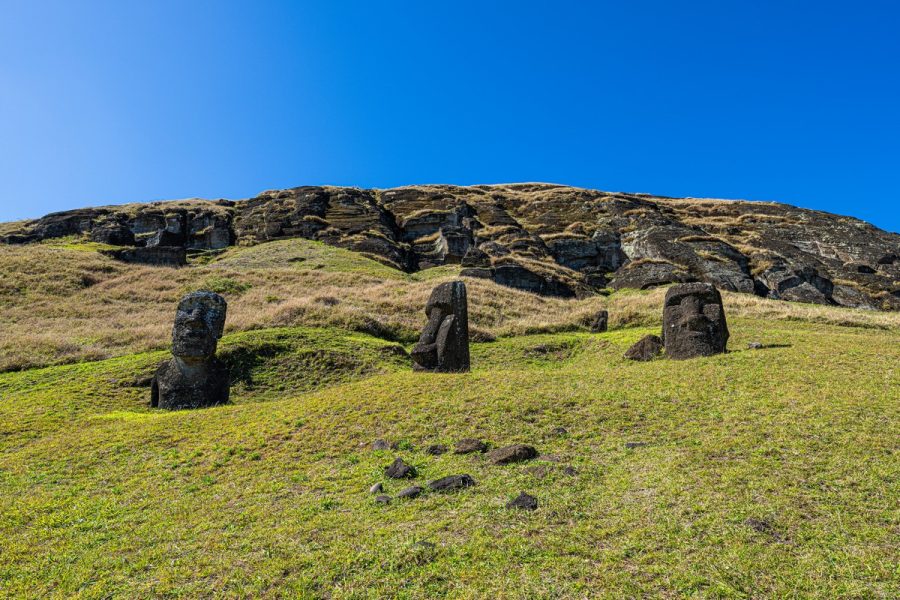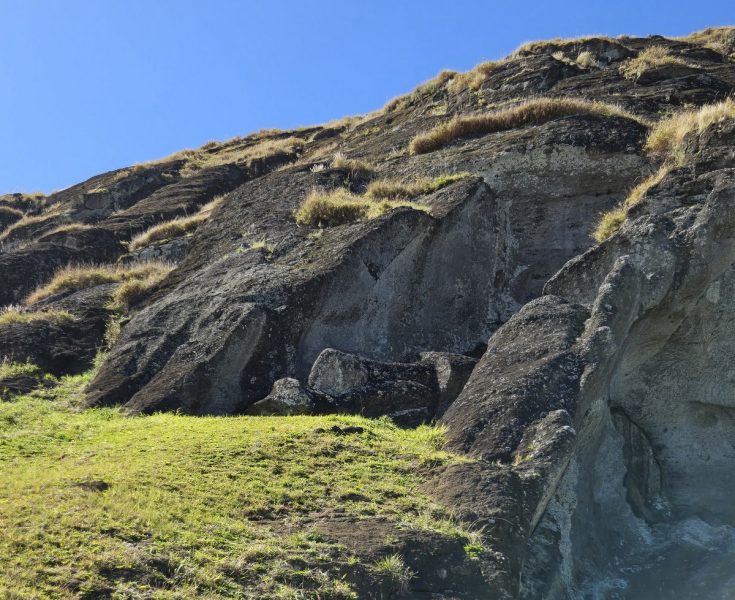November 24, 2025
Easter Island’s moai story: one of fascinating former glory.
Herewith, a continuation of my tales from the mid-South-Pacific side…
In my previous post I gave an introductory overall picture of Easter Island, while now it’s time to have a look at some specific sites. Where to begin? Let’s start with the moai; specifically – the quarry where all the raw material for the statues was sourced.
Our guide told us how the island was divided among nine or ten family clans, with land belonging to each clan radiating from a central point to the coast – like slices of a pizza, and one of these families operated the moai quarry on its slice of pizza, supplying statues to its neighbors. Completed statues were somehow transported down toward the shore to a “showroom” for other clans to come have a look, choose one, then take it off to their slice of pizza!
Here’s an example of an unfinished statue still at the quarry:
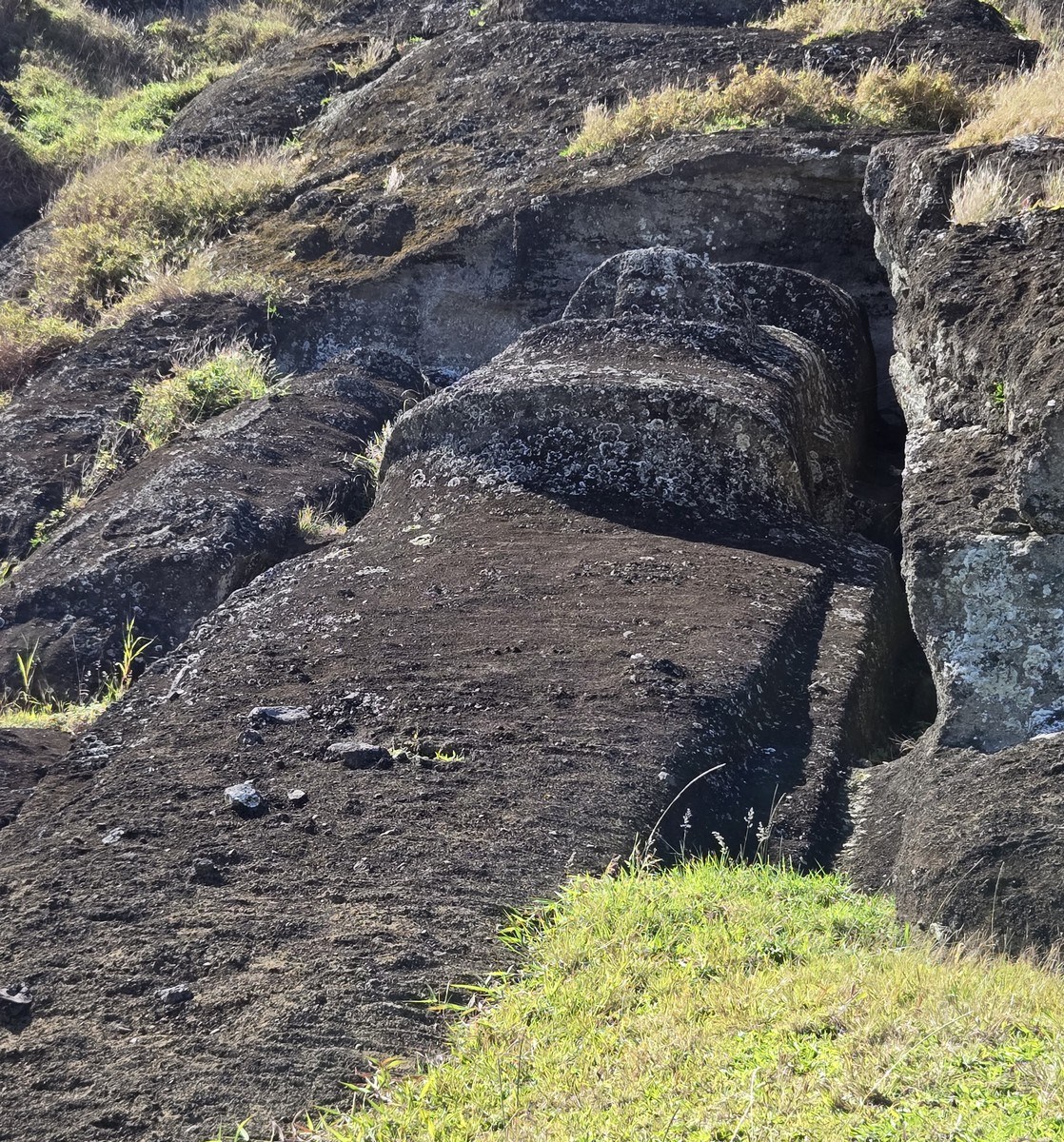
Our guide also mentioned that stone statues are actually quite common in Polynesian cultures. Of course, many other cultures have them too – one striking example being the Soviet Union, which had a Lenin statue on every main town/city square across the whole country.
You can also find stone figures like the moai on other islands that are real far from Easter Island; however, there they’re much smaller. Here, the abundant volcanic rock took statue carving to a whole new level (in terms of both the statues’ sizes and their quantity).
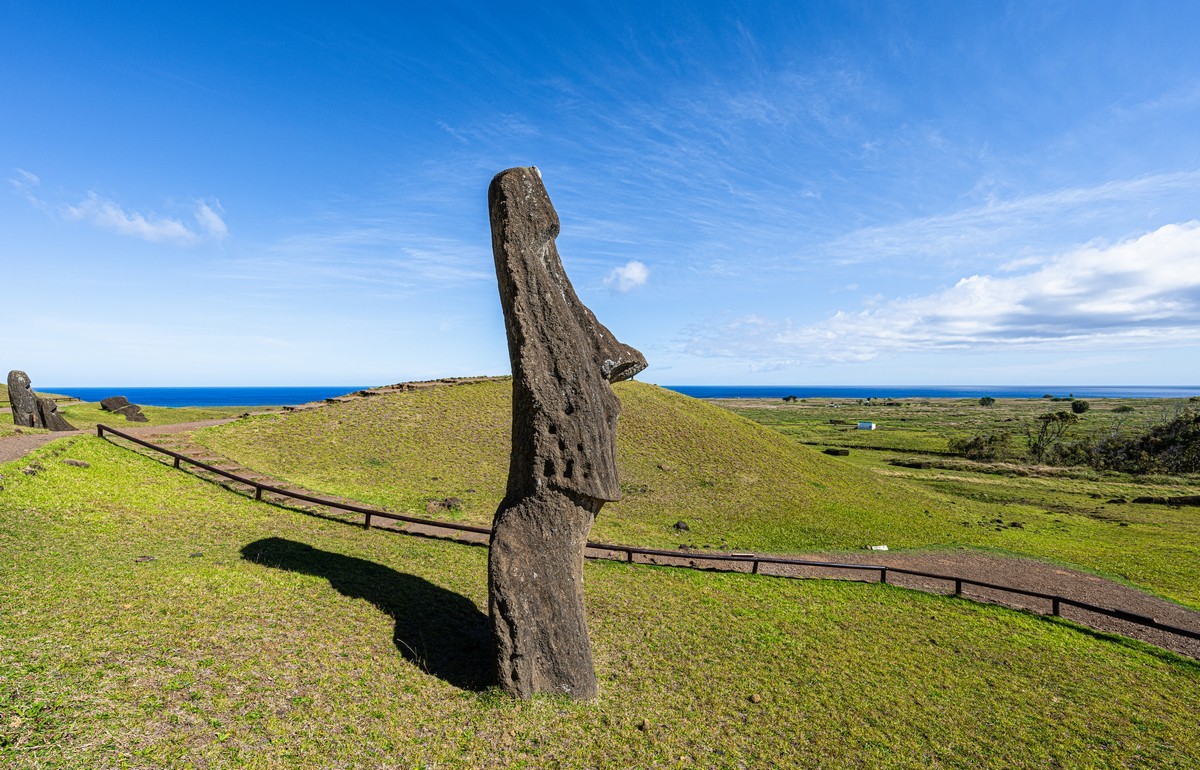
“Hmmm. Not sure. I’m enjoying this discussion, but let me have a think” )
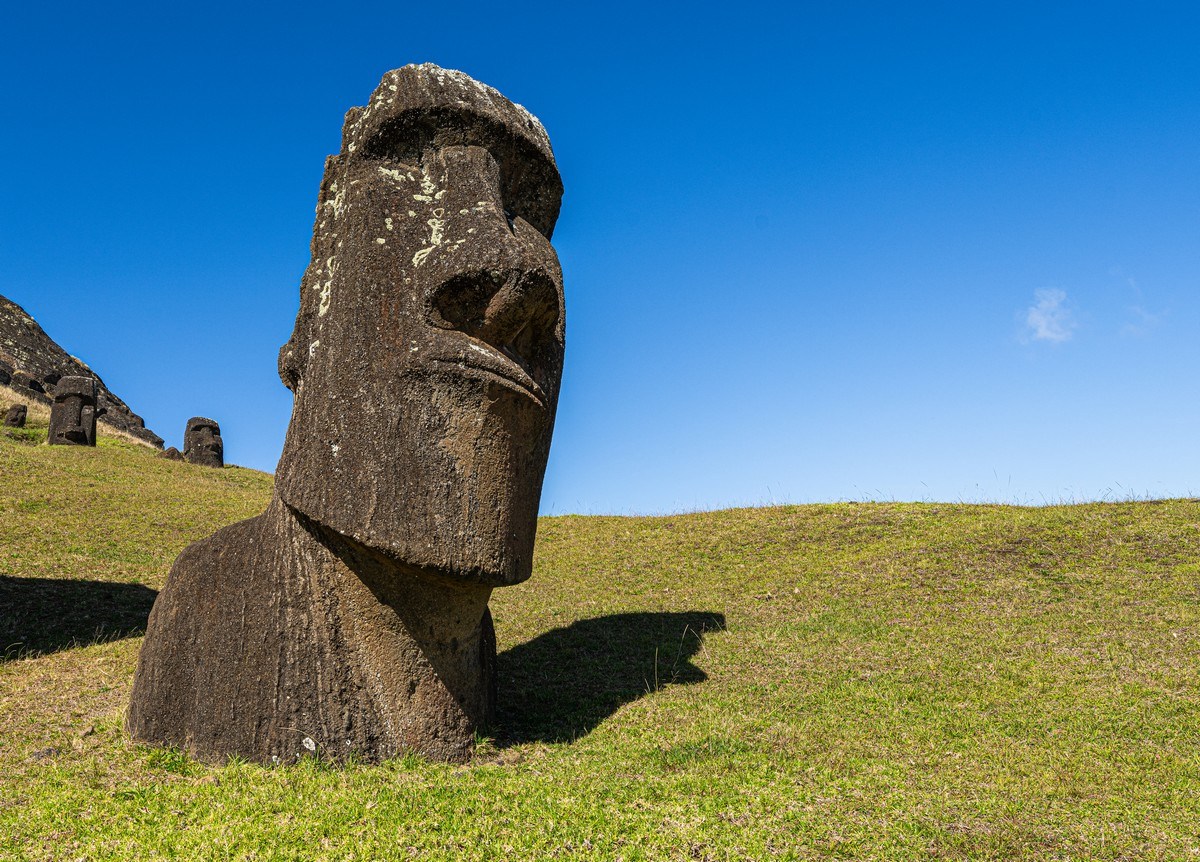
Btw, all these are located right here on Google Maps:
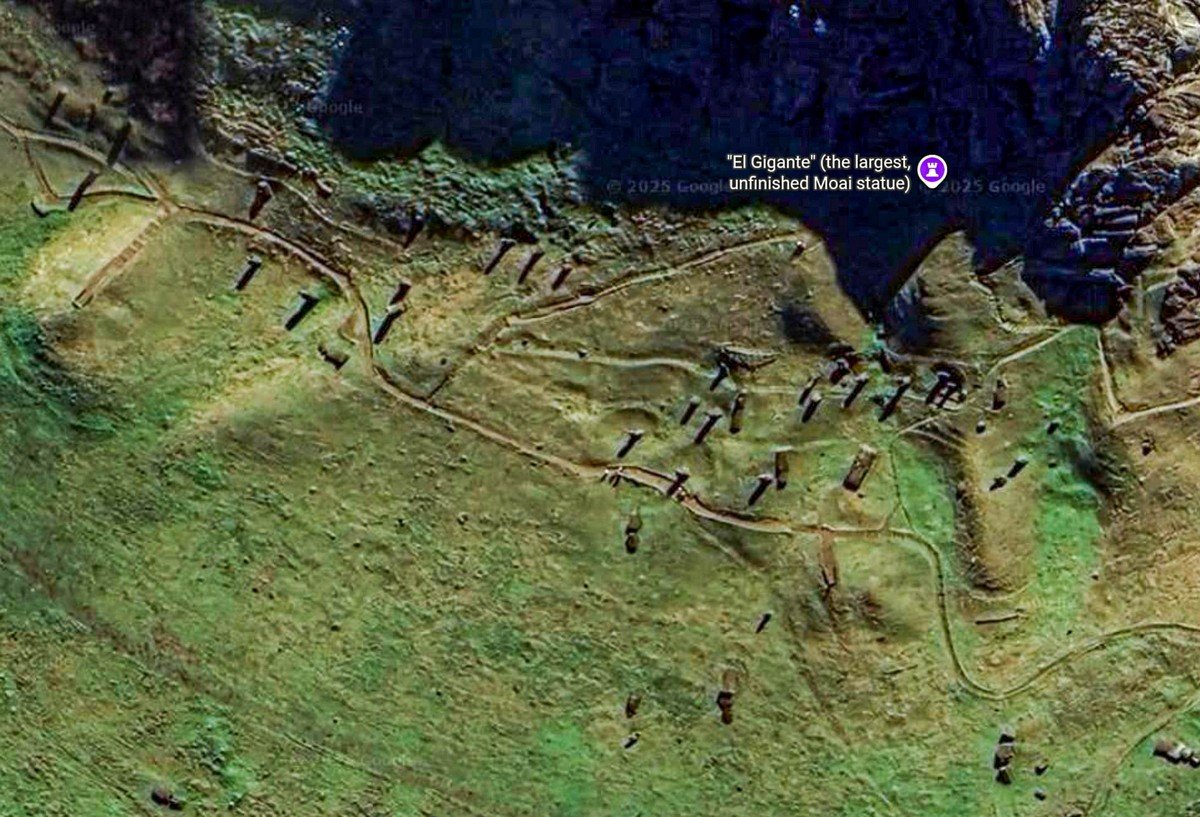
And it’s called…

Up there you can see the heads of statues that were never claimed:
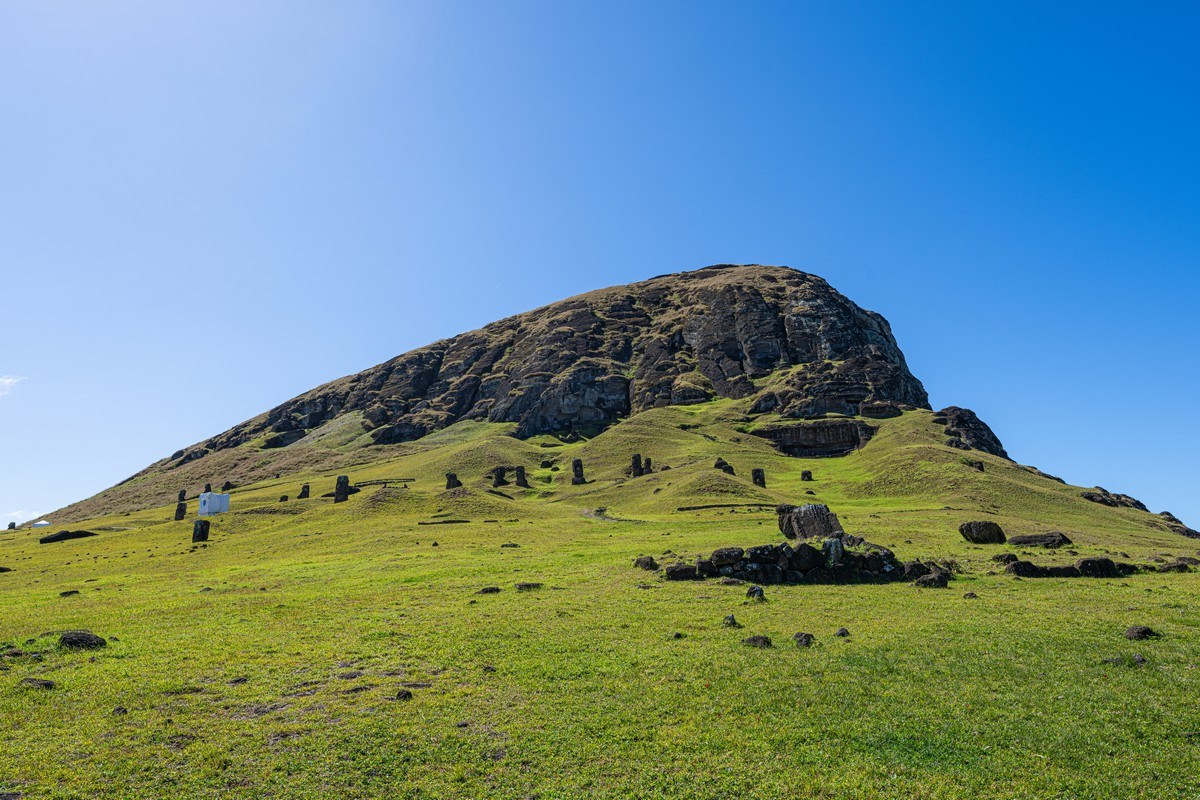
Those are just the upper parts of the statues. They’re actually quite tall, but after they were made they were buried in specially dug pits. Why and for what purpose – no one really knows. Today the statues that never found buyers are the ones observing tourists from the quarry.
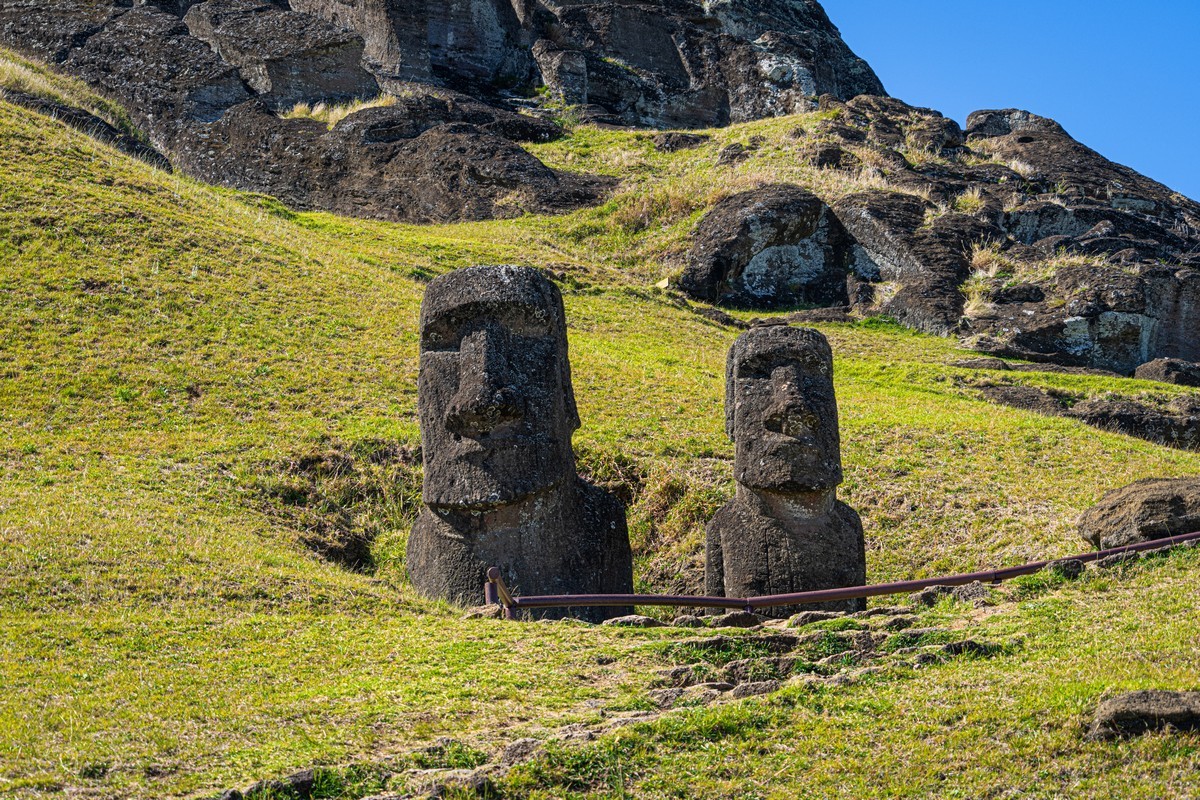
To reiterate: according to published research, the first people arrived on the island around 1200AD. The earliest – the smallest and least unimpressive – stone statues date from around 1250. Then, in the 1500s and 1600s, the local civilization reached its peak, and moai-quarrying-and-installing flourished, but then everything (moai construction, ecology, population – the lot) eventually collapsed/disappeared – for good. The statues have stood here ever since. Only the heads and shoulders are visible – the rest is buried underground:
Wow! Someone scratched an image of a European ship onto this statue – most likely a Spanish one. The arrival of ships must have made such an impression on the locals that they started depicting them on their sacred statues. I wouldn’t be surprised if that’s what happened…
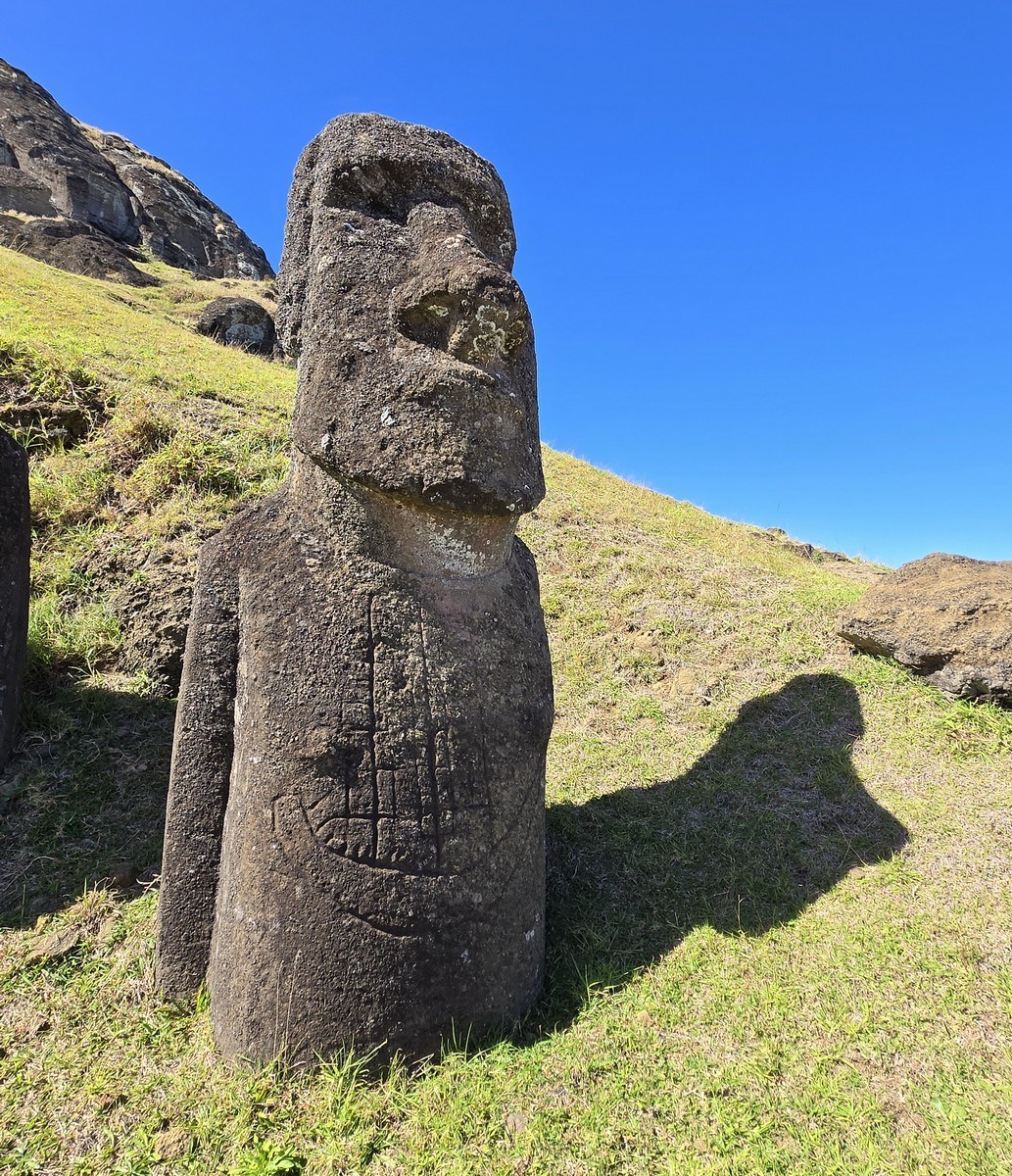
And the statues that haven’t yet been touched by museum workers are still standing just like this, embedded in 400–500-year-old layers of soil:
Maybe that’s for the best. Volcanic rock isn’t all that durable and breaks down quickly over time. Underground, these statues are probably much better preserved.

All over the island you come across other unfinished pieces. Like this one for example, which has been lying here like this for at least 400 years:
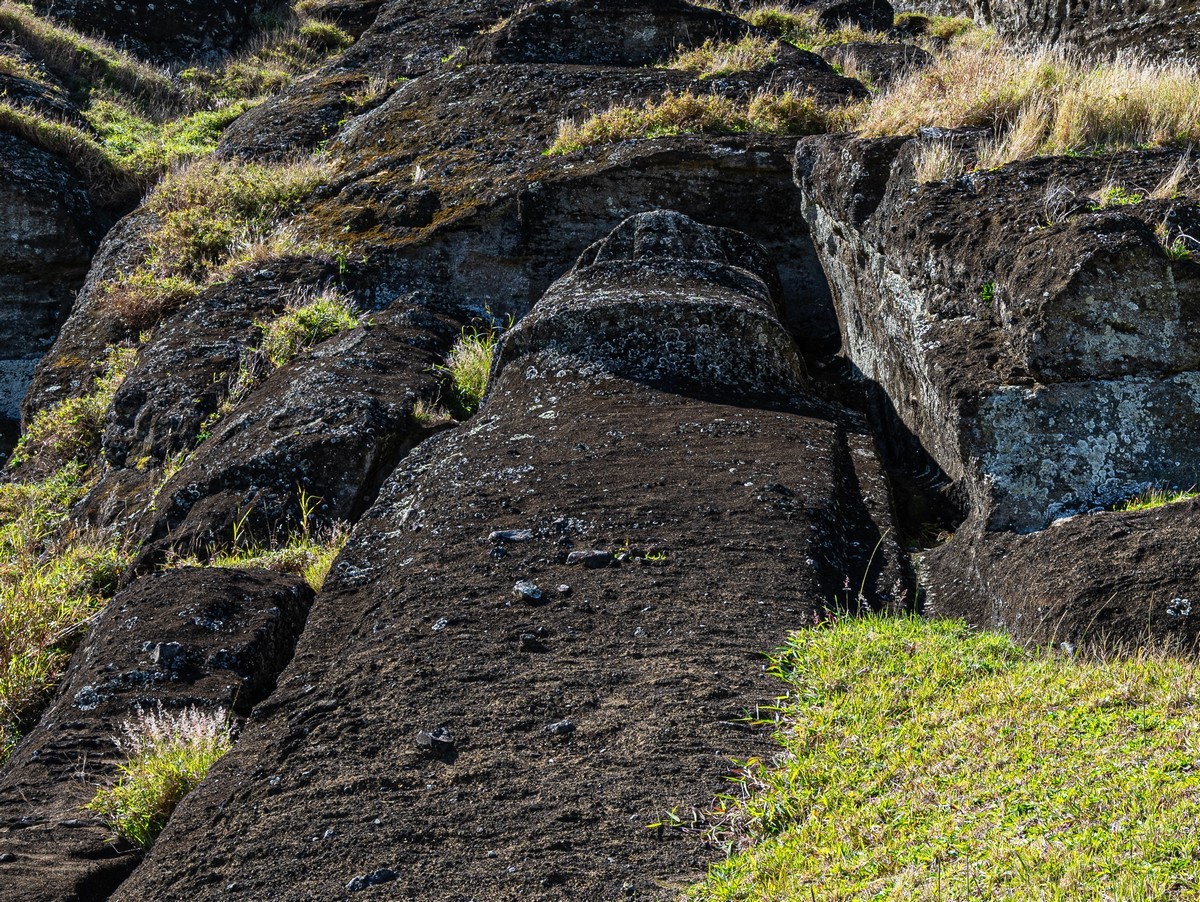
The ancient quarries are frozen in time – no more stonecutters hammering away, no more workers bustling about. The brightly dressed overseers who once supervised everything have vanished into the mists of history. Or maybe there weren’t dressed in bright clothes. Who knows? Anyway, the statues that remain stand and gaze wherever they were installed, and the unfinished ones still lie on the slopes of Rano Raraku volcano. Weathered and eroded, noses pointing upward, sometimes hard to spot on the slopes – like these. Can you see them? ->
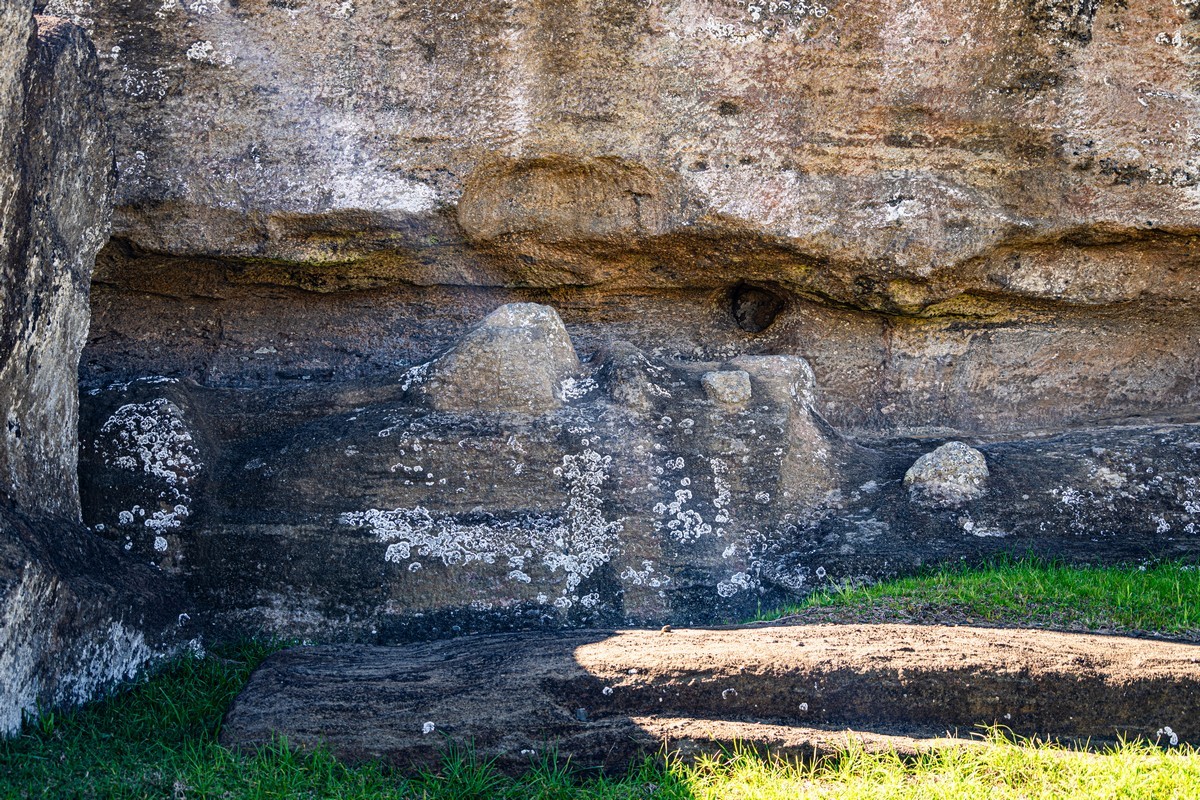
How about this one? ->

Closer:

And here’s another:
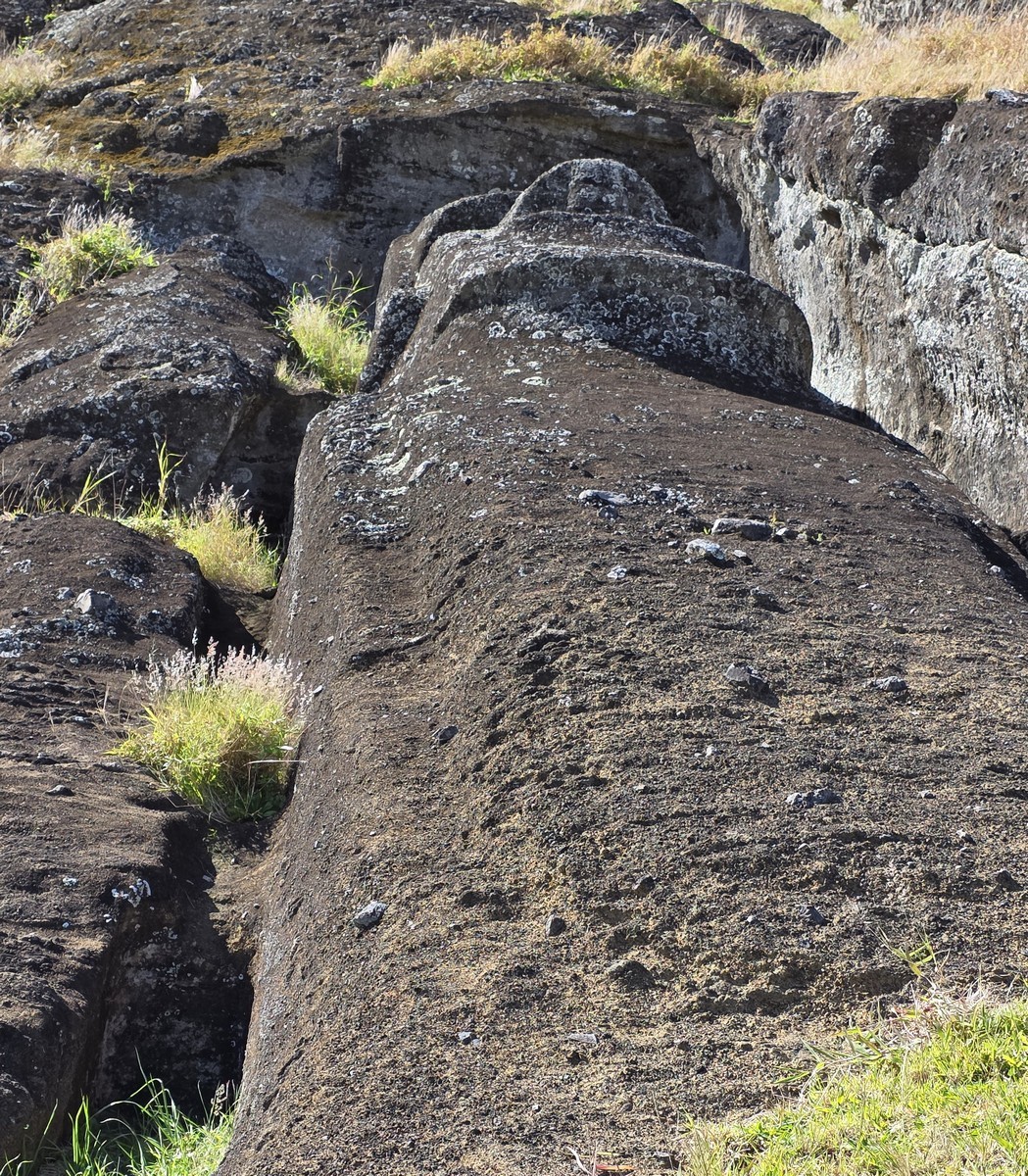
There are so many of them!

Can you see this one? ->
And this is where it starts to feel a little overwhelming. People made it all the way out here and built up a small but significant civilization. They lived here, then destroyed their own ecosystem (that’s my working theory), and eventually regressed to a more primitive existence. And all of this happened thousands of kilometers from any other inhabited land. It’s somewhat chilling – but also thoroughly fascinating.
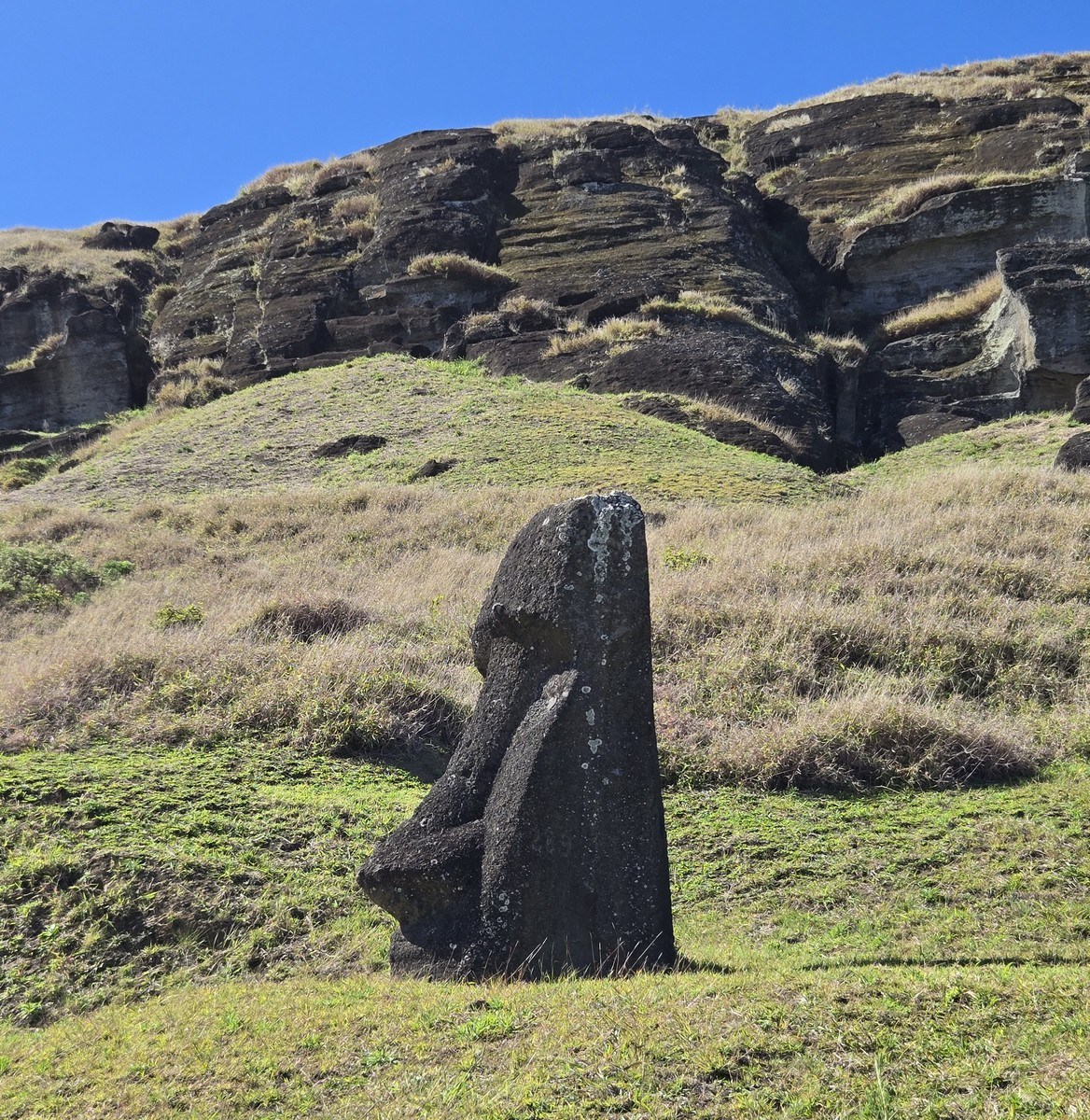
And the main thing they left behind – these moai statues, almost completely buried in the ground:
Over there on the coast there’s a row of 15 statues. But we’ll get to them a little later…

The best hi-res photos from Easter Island are here.
